A GLOW on Lake Huron and Beyond
- December 28, 2021
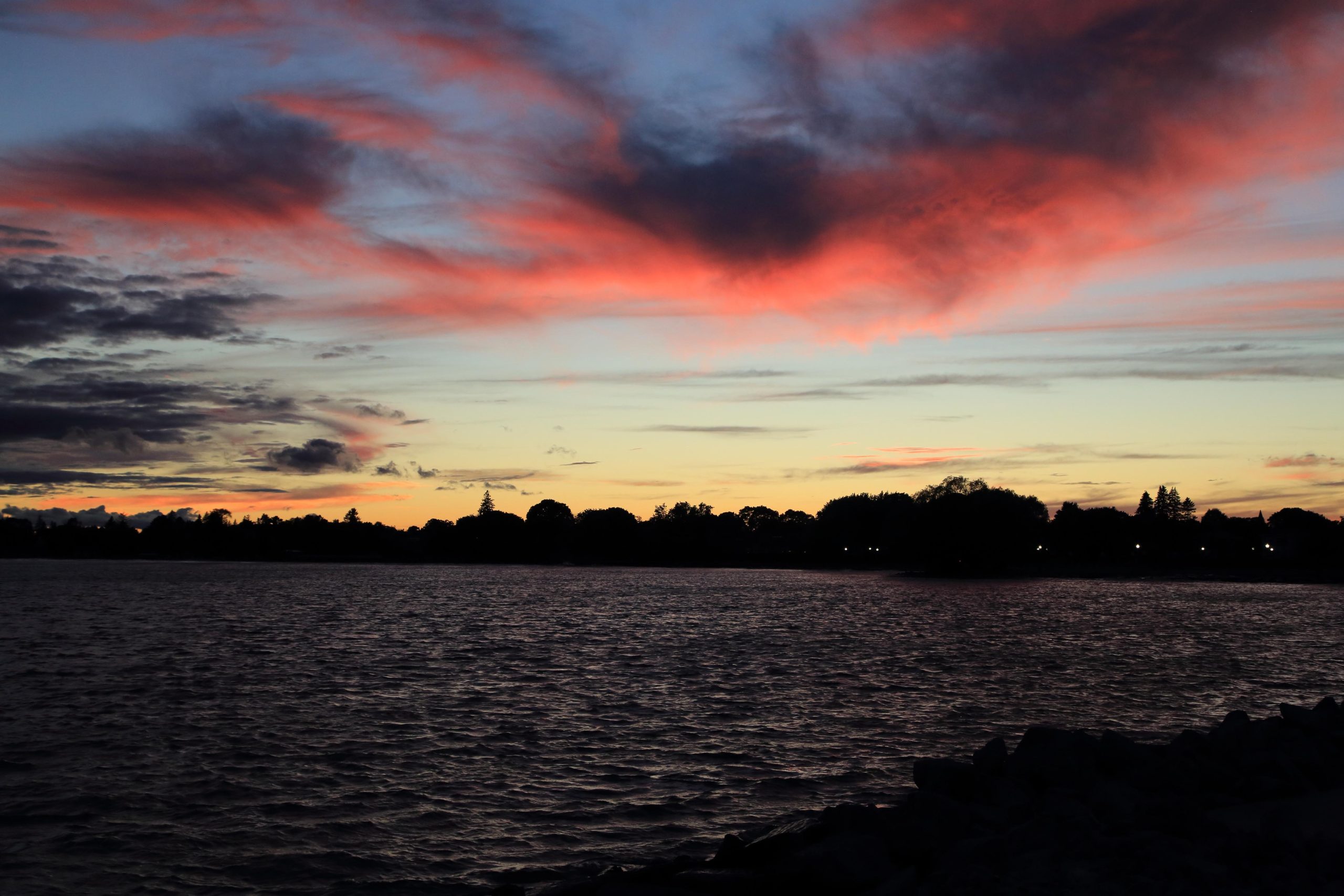
Along the shores of the Great Lakes, a first-of-its-kind effort has taken root that is changing the face of communities from Duluth to Niagara. It is a partnership called Great Lakes One Water (GLOW) and it is building transformational leadership within coastal community foundations to focus on solutions to their most pressing water issues.
GLOW encompasses 27 lakeshore community foundations, working in regional teams that span U.S. and Canadian borders. With their strong local networks and fundraising track records, these foundations are instrumental leaders committed to the idea that they can solve water problems in their communities by working together. Their aspirational goals are taking shape in very tangible ways.
Multigenerational Impact
On a blustery morning this past September in the town of Au Gres along western Lake Huron, a small group of high school students and adults embodies the spirit of GLOW. They work shoulder to shoulder in a grassy harbor park planting native wildflowers, a model of how GLOW fosters grass-roots change by bringing together educators, conservationists, and community foundations to leverage passion, expertise, and financing. The students are from Luke Freeman’s environmental sciences class and the adults are from the Bay Area Community Foundation and Huron Pines, northeast Michigan’s premier conservation organization.

“I like to think that maybe the things we do are unique,” says high school science teacher Luke Freeman while three students from his environmental sciences class transplant trays of Joe-Pye weed, coneflowers, and cardinal flowers into a long, loamy trench positioned between a picnic shelter-playground complex and the town harbor. The trench is a bioswale, a porous catchment designed to filter stormwater runoff through soils before it enters the Great Lakes.
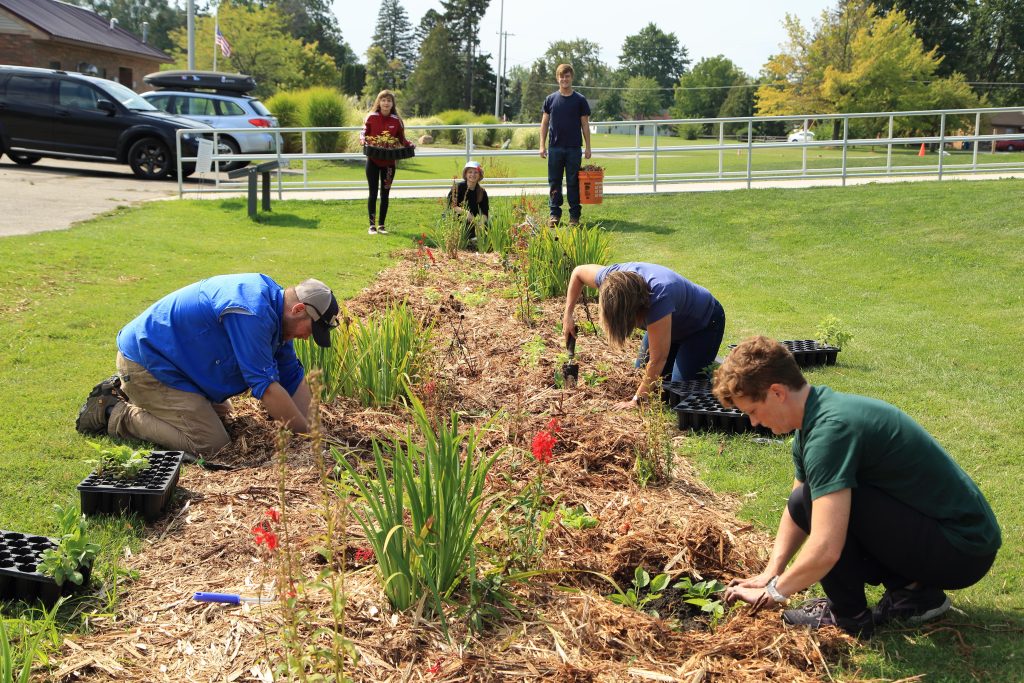
A few years ago, citizens restored this neglected park to include a picnic shelter and water playground. The problem was that the concrete improvements created excess runoff flowing straight into the Au Gres River. With a previous career as an aquatic biologist managing waterway health, Freeman saw this as an opportunity to turn some heads in town and inspire bright young minds.
“Three years ago we planted a rain garden on school property and were finally able to harvest enough seeds last fall,” Freeman explains. With a 1500-square-foot greenhouse at the high school, Freeman’s students potted those seeds and farmed throughout winter.
“We grew about 300 native Michigan plants, and last spring we took those to the local farmers market and raised almost $200. That money goes right back to buying new supplies and potting soil, and it gives the kids a real-world experience they can carry into the community.”
Freeman says the experience had gone well beyond conservation, offering practical lessons in marketing, budgeting, and community service.
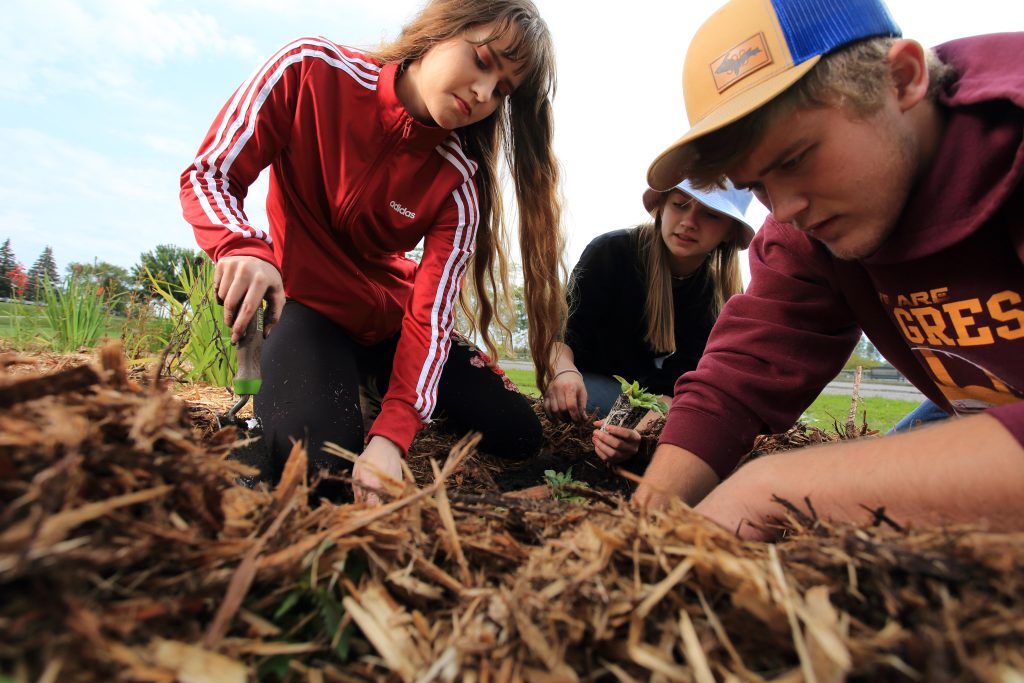
“When I was first interviewed for this job, they asked if I had experience in place-based education,” Freeman recalls, scooping a plug of dirt from the ground and sliding in another plant.
“I had never heard of it then, but it turns out I’d been doing it for years, teaching school groups about my work in the field. In my environmental sciences class, they get out into the community and can see something tangible when they drive by the park and school. They can say, ‘we did that, we did that together.’”
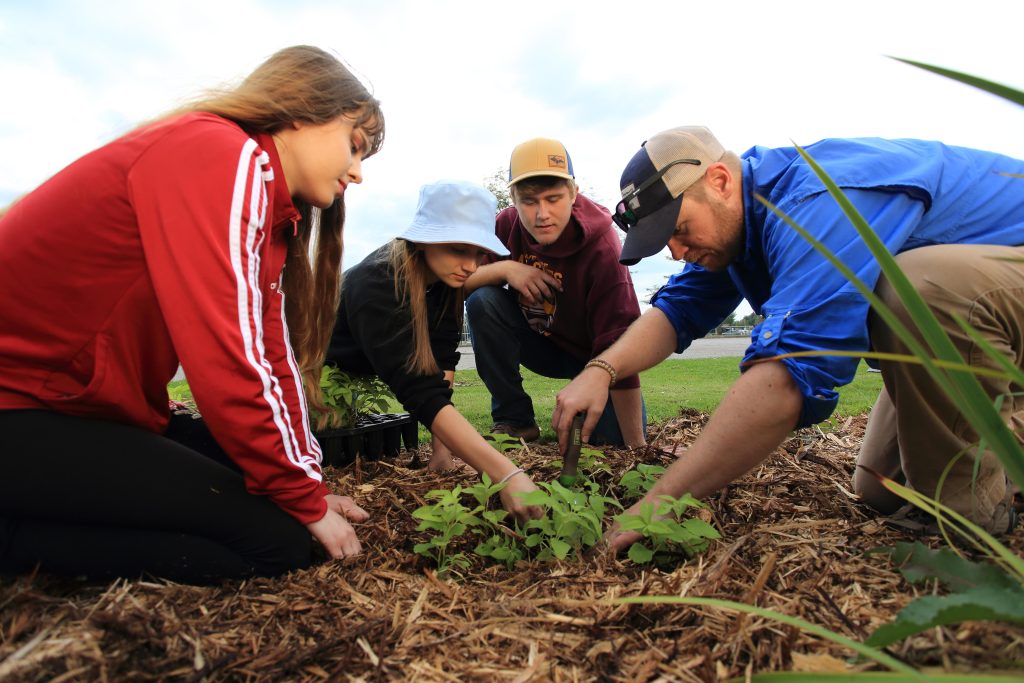
Building Capacity
While passion is the prerequisite for every successful GLOW project, funding and expertise make them possible. Diane Fong, CEO of the Bay Area Community Foundation (BACF), has driven up from Bay City to help out this morning. Her organization funnels $2 million a year into projects like this across much of northeast Michigan.
“We are the matchmaker between donors and the nonprofit partners who work day in and day out. We focus on ‘good forever,’” says Fong, alluding to the Lake Huron Forever initiative formed in 2019 that brings together shoreline community foundations and conservation partners from the U.S. and Canada to advance water quality protection and healthy sustainable communities on both sides of the lake.
“We have donors that gave to us 40 years ago. Their impact is still being felt in the community because their monies were invested and they’ve grown, generating annual support.”
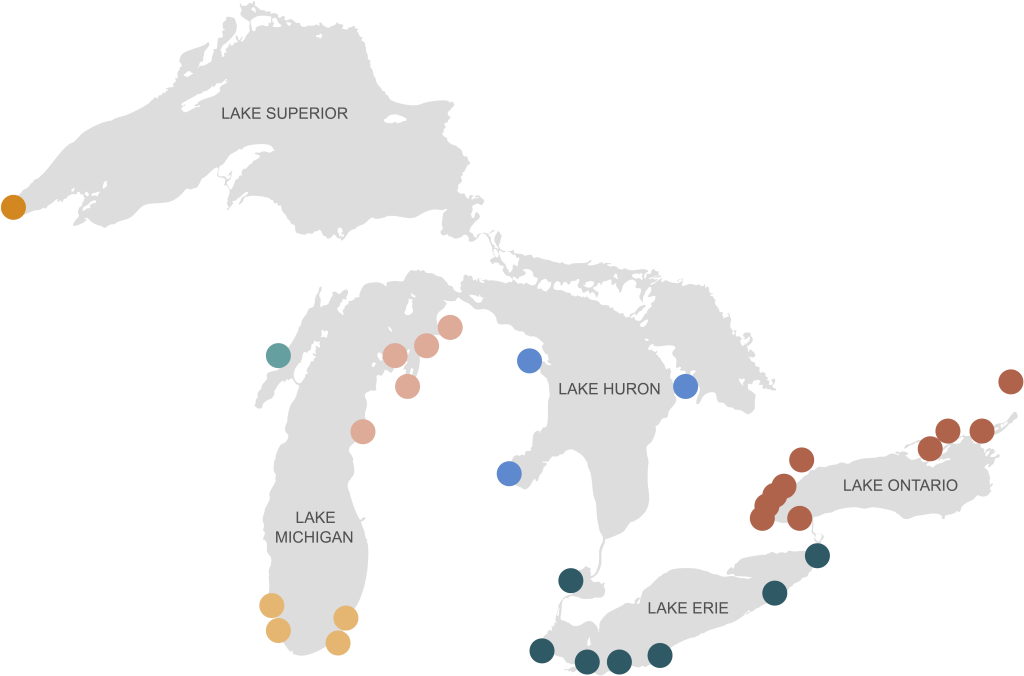
GLOW’s seven regional teams cover all five Great Lakes. The initiative took shape over five years ago, originally led by the Council of Michigan Foundations with an initial investment from the Great Lakes Protection Fund (GLPF). With part of that GLPF investment, community foundations provide the financial lubricant, and regional conservation organizations like Huron Pines provide the gears.
“Our goal is to tie water protection and natural resource protection to community vibrancy and community health,” explains Abby Ertel, community program director at Huron Pines.
“We’re really a facilitator, working with community foundations, connecting technical partners, and making sure we identify on-the-ground projects that are going to make a difference in the communities where we work.”

Judging from Freeman’s high school seniors, his place-based education projects are already making a difference. One student, Gage, has his eyes set on becoming an engineer with an environmental slant, and two others, Natalie and Regan, want to major in elementary education and marketing.
A Model for Improvement
Two hours north of Au Gres, another impressive example of GLOW’s green infrastructure success has just been unveiled at the Thunder Bay National Marine Sanctuary, a national treasure preserving the pristine waters, shores, and shipwrecks within its 4300-square-mile expanse. Its visitors center, the Great Lakes Heritage Maritime Center run by the National Oceanic and Atmospheric Agency (NOAA), features a museum of interactive displays related to regional history, natural history, and weather.

With the help of GLOW funding and expertise, NOAA recently retrofitted the heritage center’s roof with a large rain garden and activity venue. In anticipation of its grand opening, key players have congregated on the roof today to see the new plantings and amenities.
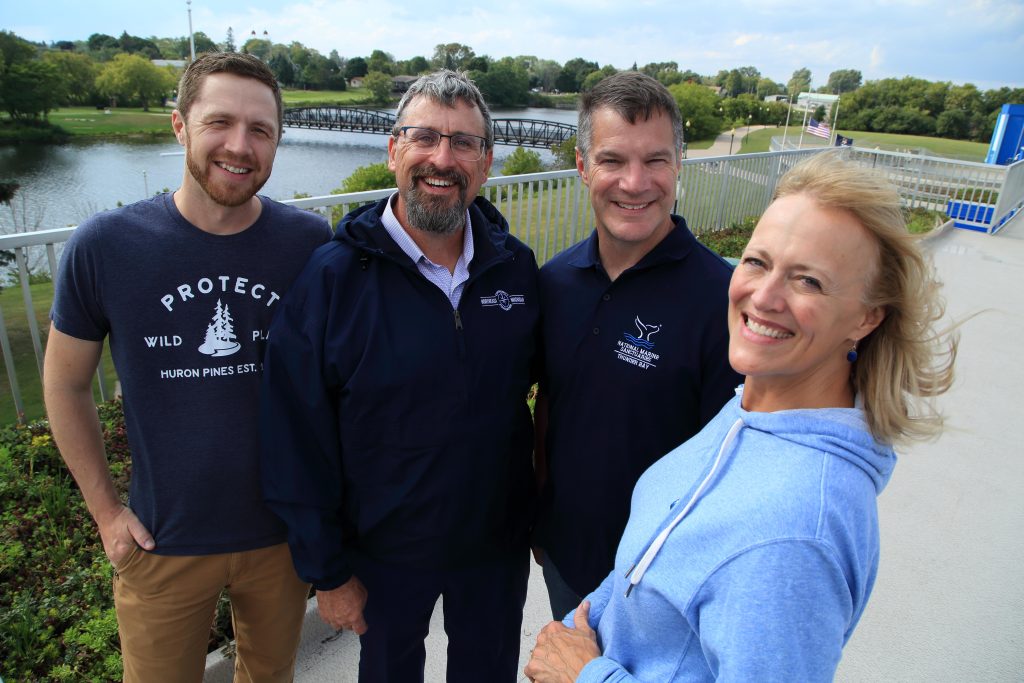
“We originally applied for a $25,000 grant,” says Katie Wolf, director of the Friends of Thunder Bay National Marine Sanctuary.
“That grant program was focused on stormwater management because it’s a huge issue in protecting the Great Lakes,” Wolf says. “A green roof deck can actually capture 50% of the runoff during rainstorms, and that’s significant being right on the Thunder Bay River, which flows directly into Lake Huron. A lot of the roofs here are flat, so this is a model for the community.”
Wolf adds that reducing stormwater reduces flooding, keeps pollutants out of the water, provides habitat for pollinators like bees and butterflies, and is a cooling factor that saves on air conditioning.
Prompted by GLOW’s investment, NOAA multiplied the seed money six-fold, resulting in a $150,000 project complete with safety railings, ADA access ramp, a sound system for public events, and (eventually) informational audio describing the area’s natural and human history. The rooftop view of the Thunder Bay River coursing between lush grassy banks and walkways that lead off to downtown Alpena’s small cluster of red brick buildings shows how connected the heritage center is to this community.

“A project of this scale not only serves as an educational component for students, but also for builders,” says Wolf. “They can come here and see the technology and how accessible it is. All the materials—everything that was done here—is Michigan-based. It’s a very doable project, but a lot of times they just have to see it in action.”
During the visit, a squall suddenly descends, chasing the group inside where an interior balcony overlooks the museum’s life-size diorama of a foundering ship being aided by a lifeboat in stormy seas. Like the lifeboat, GLOW provides a lifeline for groups like Huron Pines and the Community Foundation for Northeast Michigan (CFNEM).
“This started with the Council of Michigan Foundations reaching out to shoreline community foundations, and it builds on a relationship between the Great Lakes Protection Fund and CMF back in the early 2000s,” says Pat Heraghty, CFNEM’s executive director.
“Foundations are great stewards of community assets,” he explains. “We bring players to the table to have conversations, and our fiscal oversight and convening power make us a key player. Huron Pines was a critical partner we brought in for their deep environmental background and expertise in reviewing grants and making sure that everything meets true environmental standards.”

As a scout leader with two boys in Alpena schools, Heraghty is passionate about preserving his town’s historical and natural treasures. By maximizing funding and bringing in the right expertise, he represents the best of what GLOW can accomplish when leaders and citizens are committed to a bright future.
A Tale of Two Lakes
In western Lake Erie, a GLOW project run by Metroparks Toledo focuses on citizen science. Along the banks of the Maumee River—one of the largest watersheds of the Great Lakes basin—a Metroparks staffer trains volunteers in collecting and classifying tiny aquatic organisms. Armed with nets, they wade into the swift waters.

Several days of rain and the river’s slippery clay bed have made their mission more perilous than usual, but the specimens they gather help scientists assess the health of the waterway. After wading back to land, the five women work at a picnic bench identifying and cataloging their haul.

Here in Side Cut Park on the outskirts of Toledo, the river registers as fairly clean based on the assortment of snails, larvae, and nymphs identified this June evening, but it is a stark contrast to the heavy industry that lines the river’s mouth scant miles downriver. Though once much worse, pollution remains a problem in Lake Erie, and GLOW projects like these along all of the Great Lakes are keeping industry and officials accountable.
Sustainability for the Future
Another example of accountability can be found in a neighborhood in the southside Chicago town of Blue Island. This summer, a team of environmental field techs has gone the extra mile to improve an already existing GLOW project that built rain gardens on streets identified as stormwater hotspots several years ago.
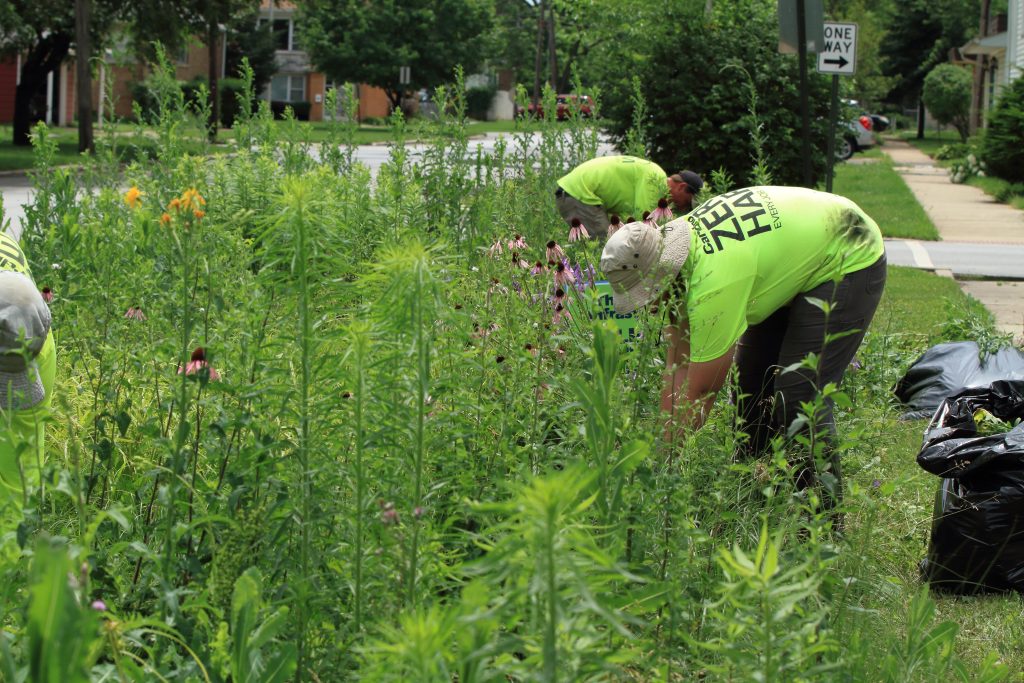
Neighborhood projects like this provide an opportunity for community members to come together to solve flooding problems and for underemployed local youth to acquire useful landscaping job skills. Many green infrastructure projects, including rain gardens, require regular maintenance, and with the help of GLOW, they are being restored to their full splendor in hopes of inspiring passion in the community to sustain them for future generations.
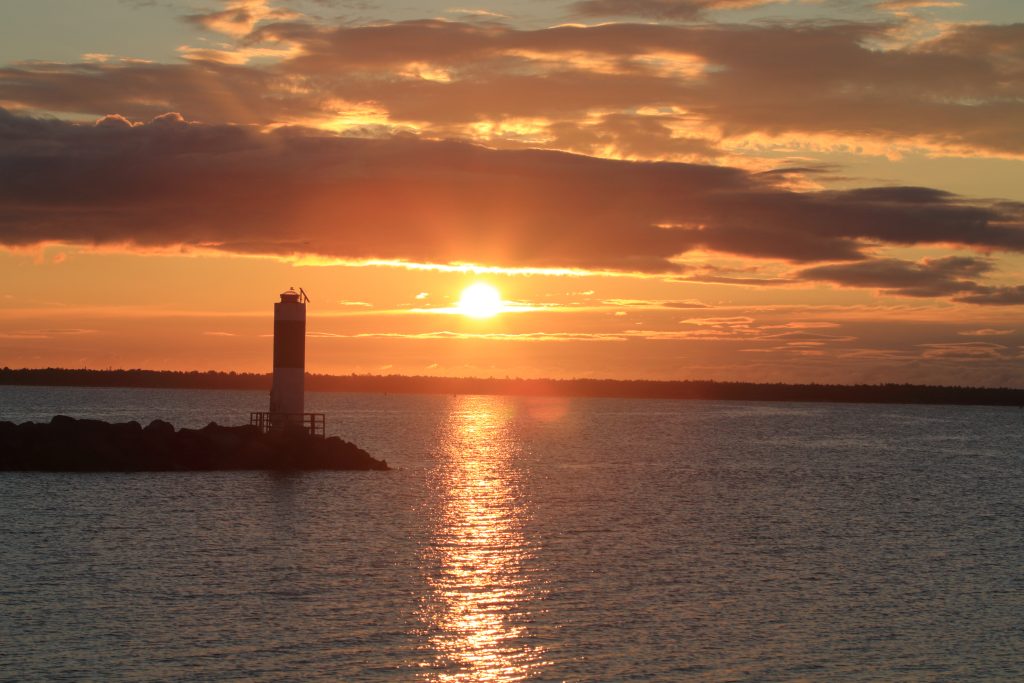
Story and photos by Randall Hyman.